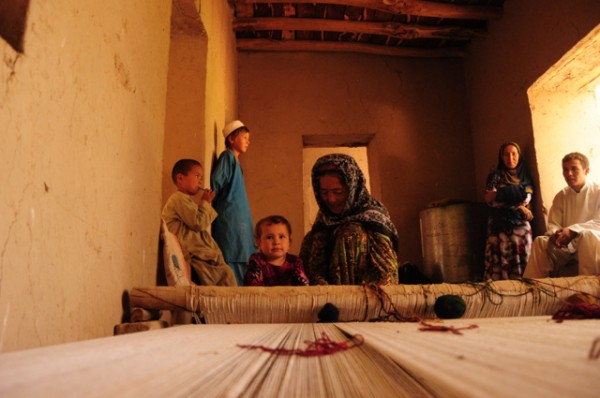When Eliza Webb found a cellphone inside her
ransacked vehicle in West Seattle last month, she figured the cellphone
probably belonged to the person who’d prowled her car and that that
person was likely a teen. But Webb decided not to call police.
by Christine Clarridge
Eliza Webb and her husband, Blake, hold some of the things found with her car -- items that don't belong to either of them.
When Eliza Webb found a stranger’s cellphone inside her
ransacked car last month, it didn’t take a lot of sleuthing to determine
two things: one, the cellphone probably belonged to the person who’d
prowled her car; and two, the culprit was likely a teen.
Webb, who works with high-school students and is married to a man who
has paid dearly for a youthful indiscretion, paused before summoning
police.
“I think bringing the police and courts into something like this can
have long-term, devastating consequences for kids,” said Webb, 29, of
West Seattle.
“I wanted to meet him, talk to his parents and see if there might be
another way. I felt that if I could get him to own up to what he’d
done and understand there were consequences, it could be a much better
outcome.”
What Webb ended up doing — taking the 19-year-old and a cohort
door-to-door through her neighborhood to apologize and return items
they’d stolen from 13 unlocked cars — ended up making a lasting
impression not only on the boys and their families, but also on many of
her neighbors.
“When people say it takes a village, this is exactly what they are
talking about,” said Lincoln Park neighbor Heather McKee. “I was so
impressed that someone would take the time to do this when they were not
their own kids.”
The teen who left his phone in the car, and his mother — both of whom
spoke on condition of anonymity so that the incident would not follow
him — said they were grateful for the experience.
“At first I thought she should press charges,” said the teen’s
mother. “I thought it would be the only way he would learn that there
are consequences for criminal activity. But after I talked to Eliza and
her husband, I saw how disastrous that could be.”
The teen said, “I was astonished at how bad my judgment is when I’ve
been drinking and I don’t want to risk my freedom over something
stupid.”
Sharing cautionary tale
When Webb found her car ransacked the morning of June 14, her initial
thought was that her husband had been looking for something in the
dark. But she soon found the unfamiliar cellphone on the seat and
discovered that her gym bag had been rifled and her running shoes and
sunglasses were missing.
She opened the phone and began going through text messages and phone contacts. She
pushed the contact listed as “Mom” and reached the prowler’s mother.
“She was wonderful,” Webb said. “She said she would support whatever
decision I made, and she invited me to go to her house and talk to her
son.”
When Webb and her husband got to the house, about five blocks from
their own, she found the 19-year-old and his twin sister crying.
The teen quickly owned up to what he had done, said his actions had been fueled by alcohol and boredom, and apologized.
Webb’s husband
then told the teen his own story.
When he was 20, Blake Webb was charged with underage drinking after
he went out partying with friends and decided to walk home rather than
get in a car. An officer saw him on the road, asked whether he’d
consumed any alcohol and Webb told the truth.
Although he is now a dosimetrist, calculating radiation doses at a
cancer-research facility, Blake Webb still has to disclose that criminal
conviction on job, rental and school applications 12 years later, his
wife said.
“We just wanted him to know that everybody does things they wish they
could take back, but some things will be on your record forever,” she
said.
Running into obstacles
The teen also admitted that he and his friend had prowled about 12 additional cars that night, Webb said.
“That stopped me,” said Webb. “I originally went there to talk to him
and get my things back, but now we were talking about other victims.”
But Webb said her understanding was that there had been no
damage to any of the vehicles because they had all been unlocked, like
her car. She asked the teen if he would be willing to return the stolen
items to the owners and try to make things right.
The teen agreed, but said the stolen items were in the trunk of a friend’s car.
“I didn’t really want to rat him out,” the teen explained Wednesday, “but all the stuff was in his car.”
Webb said she, her husband and the 19-year-old went to the second
teen’s house, where they spoke to a “very disappointed and dismayed”
father who rousted his sleeping 18-year-old.
When Webb explained what had happened, the second teen agreed to go
along with them. They gathered the pilfered items — cellphones and
laptop chargers, sunglasses, a fedora, Webb’s gym shoes — and headed
back to Webb’s cul-de-sac.
Another obstacle emerged: The teens couldn’t remember which cars they’d prowled.
So Webb took them door-to-door, visiting every house on the
cul-de-sac, so the teens could explain to the residents what they’d
done, display the items they’d taken and apologize.
“They seemed very embarrassed and contrite,” said McKee.
Most neighbors thanked Webb and praised the teens for what they were
doing. A few scolded and lectured the teens, and others shared stories
about the trauma of being the victim of a crime.
“I think it was good for them to hear how something that seems as
minor as this can really rob people of their sense of security,” said
Webb.
They were not able to find every victim that morning, but Webb said
they left word that the stolen items could be retrieved at her house.
Since then, only one person has contacted Webb to retrieve belongings,
but many have stopped by to talk about what she did.
Webb said her block has an annual summer party and the teens have
agreed to write a letter of apology that will be read at this year’s
event.
“I’m actually kind of glad it happened,” said the 19-year-old. “It
felt terrible to hear that people are worried and feel like they have to
lock the door because of what I did. In a funny way, I feel closer to
my neighbors and kind of look forward to seeing them around in different
circumstances.”
His mother said, “I’m deeply grateful to Eliza for taking the time to
become personally involved with my son and giving him the chance to go
face-to-face with the people he victimized and make amends.
“Kids need somebody besides their own parents looking at them and holding them accountable. She did a beautiful thing.”
















 A recent study published in Scientific Reports, an online science
journal, revealed that webs of the common garden spider - made from silk
thread - are attracted to electrostatically charged objects. Honeybees
and fruit flies, for example, generate an electric charge when they flap
their wings.
A recent study published in Scientific Reports, an online science
journal, revealed that webs of the common garden spider - made from silk
thread - are attracted to electrostatically charged objects. Honeybees
and fruit flies, for example, generate an electric charge when they flap
their wings.